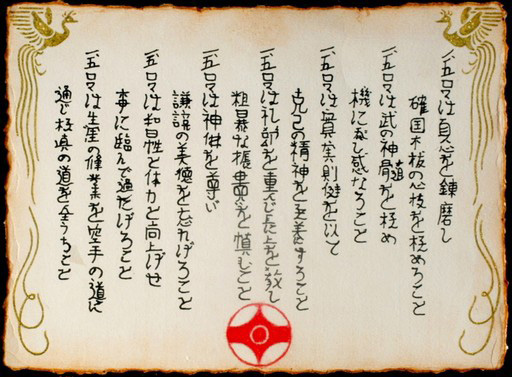KYOKUSHIN KARATE
KYOKUSHIN INTERNATIONAL KARATE FEDERATION NAKAMURA
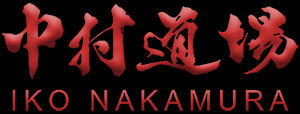
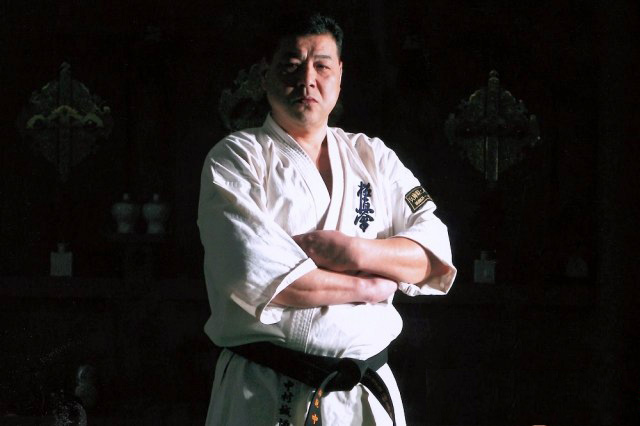
Sosui Makoto Nakamura
The Kyokushin Karate School of Saint-Jean-sur-Richelieu is affiliated with the federation of Karate International Nakamura. The honbu (head office) is located in Kobe, Japan.
Nakamura Dojo, Kobe, Hyogo, Japan



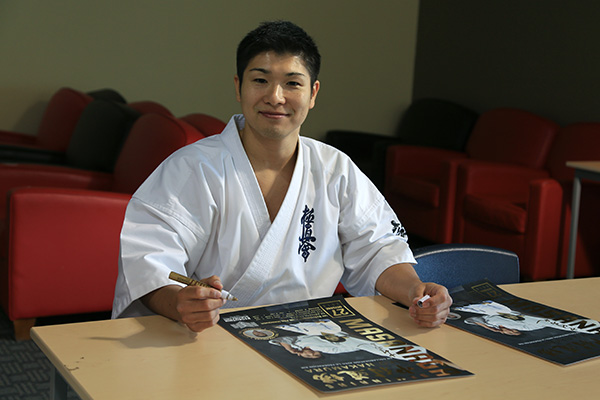
The tradition of
Kyokushin Karate
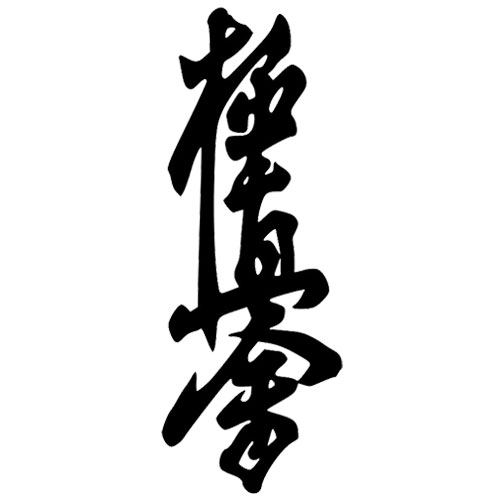
The Kanji
The Kanji is universally displayed on the dogi of Kyokushin practitioners. It must be understood that the path of Kyokushin is the pursuit of ultimate truth.
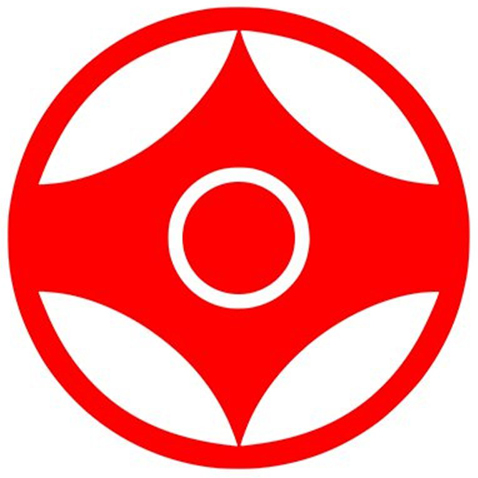
The Kanku
The Kanku is the symbol representing the Kyokushinkai style of karate. It comes from the kata of the same name, which means “to contemplate the sky.”
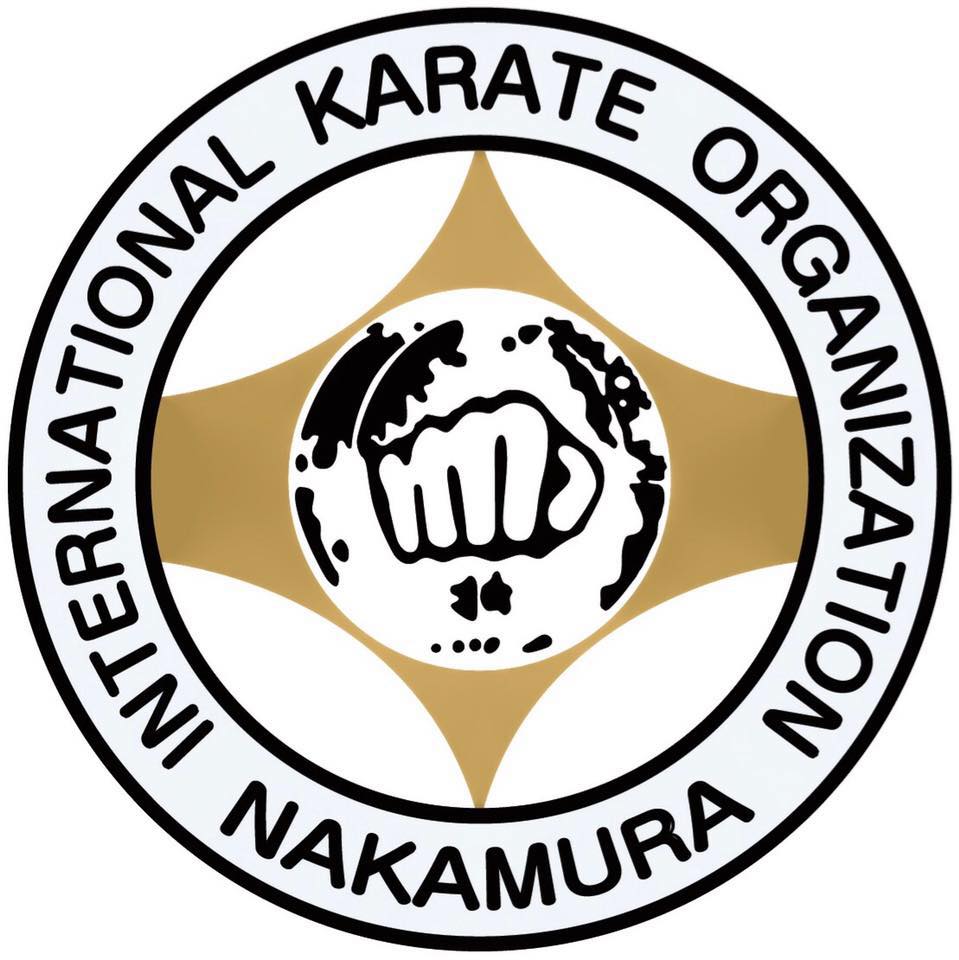
IKO Nakamura
Here is the Kanku used by the Kyokushin International Nakamura Karate Federation. A fist and the universal symbol have been added to the center.
The prerequisites
for belt promotions
At that time, there was no color system for rank advancements, commonly referred to as belt promotions. It is said that over time, the perseverance of the karateka in training caused the white belt to become darker with wear. This is how students of a more advanced level could be distinguished. Of course, washing the belt was forbidden.
After several years of hard work and effort in karate, the student could achieve the rank of black belt by passing a rigorous examination. Subsequently, the karateka could wash their belt, which would return to white. This represents a symbolic return to the initial origins, a new beginning, a new purity, with the opportunity to deepen their understanding of karate. This is why it is said that karate begins at the level of the black belt.
Later on, the colored belt ranks replaced the old system of the soiled white belt. A distinct belt color was assigned to each level, corresponding to the rank achieved.
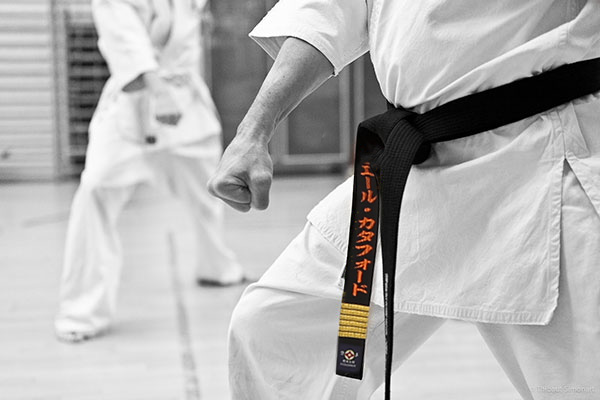
The required katas
by belt level.
White to Orange
Taikyoku First Level
Taikyoku Second Level
Sokugi First Level
…..
…..
Orange to Blue
Taikyoku First Level Ura
Taikyoku Second Level Ura
Taikyoku Third Level
Pinan First Level
Sokugi Second Level
Blue to Yellow
Taikyoku Sono San Ura
Pinan Sono Ichi Ura
Pinan Sono Ni
Sokugi Sono San
Yellow to Green
Pinan Second Level Ura
Pinan Third Level
Pinan Fourth Level
Sanchin Kata
Basic Bo Kata First Level
……
Green to Brown
Pinan Sono Go
Pinan Sono Son Ura
Pinan Sono Yon Ura
Happo-no Kuzushi
(the first 8 counts)
Tonfa no Kata
Brown to Shodan
Pinan Sono Go Ura
Gekisai Dai
Gekisai Sho
Teki Sono Ichi
Bassai Dai
Happo-no Kuzushi
(the first 16 counts)
Shodan to Nidan
Tsuki No Kata
Yantsu
Tensho
Saiha (Saifa)
Tekki sono ni
Scion Bô
Happo-no kuzushi (the 32 counts)
Nidan to Sandan
Seienchin
Seipai
Kanku
Ushiro Bo
Tekki Third Level
——
………
Sandan to Yondan
Taizen kata (Bo)
Sokei
Garyu
Sushiho
——
——
……..
* Shodan: Black Belt 1st Dan * Nidan: Black Belt 2nd Dan * Sandan: Black Belt 3rd Dan * Yondan: Black Belt 4th Dan
Interpretation
Kyokushin belt colors
WHITE
Purity and potential: White symbolizes potential and purity. The new karateka is pure because they have no experience and are completely unaware of the demands of this art.
ORANGE
Stability. The element of earth, which signifies that training should focus on stability.
BLUE
Fluidity and adaptation: The element of Water, which signifies that the karateka develops the ability to adapt and react with fluidity.
YELLOW
Affirmation: The element of Fire. Focus on the Hara and feel the energy flowing from this center.
GREEN
Emotionality and sensitivity: The element is Air and is connected to the heart. In the dojo, the green belt focuses particularly on breathing techniques.
BROWN
Creativity and practice: At this level, the karateka will develop their own combinations. The karateka should be strong and very comfortable in executing all techniques.
BLACK (SHODAN)
The black belt is the most significant in a karateka’s life. Black is a strong color, as it encompasses all other colors. A black belt who trains extensively will see their belt wear down and eventually turn white again. The circle is complete.
Name and meaning
Kyokushin katas
Taikyoku (1, 2, 3), created by Gishin Funakoshi.
The Ultimate Action.
Sokugi (1, 2, 3), created by Mas Oyama in 1980.
Kata of kicks.
Ichigai kata
Means the union of spirit and will (or a single will).
Hiji kata
Kata of attacks, especially with the elbows.
Pinan/Heian (5), Created by Anko Itosu in 1905 (trainer of Gichin Funakoshi)
Forms of peace and calm (long peace).
Sanchin no kata, Brought by Kanryo Higaonna from China to Okinawa.
Three Battles.
Gekisai sho, Created by Chojun Miyagi in 1940.
Conquer and occupy with discretion.
Gekisai Dai, Created by Chojun Miyagi in 1940
Conquer and occupy with strength.
Yantsu, created by Mas Oyama,
Maintain purity.
Tsuki no kata
Kata of punches.
Seipai
The eighteen hands (6 x 3), where 3 represents good, evil, and peace.
Tensho, created by Chojun Miyagi as a complement to Sanchin.
Reversed palm techniques.
Saiha (saifa), created by Chojun Miyagi
Maximum destruction.
Seienchin
Calm through the storm.
Garyu
Reclining dragon.
Created by Mas Oyama (Garyu was Mas Oyama’s pseudonym in his early karate days)
Develop a spirit of humility like a reclining dragon that possesses strength but chooses not to unleash it.
Kanku
Looking at the sky.
Originally Kushanku, Okinawa in 1756
Kata chosen by Gichin Funakoshi during his first karate demonstration in Japan in 1922. Kanku is the supreme kata of Kyokushin.
Sushiho
Fifty-four steps.
The Dojo Kun
The Dojo Kun teaches us a clear path toward the ultimate goals of Kyokushin: working on character, sincerity, constant effort, respect for others, and self-mastery. Technique is secondary; what matters is the inner spirit that must be disciplined. By following these simple principles, the karateka begins to make progress on the Way of Kyokushin Karate.
We will train our heart and body in order to acquire a firm and unshakable spirit.
We will always pursue the true meaning of martial arts and keep our senses alert.
With vigor, we will seek to cultivate a spirit of personal deprivation.
We will respect our superiors and the rules of courtesy, and avoid all acts of violence.
We will follow our master and never forget the true virtues of humility.
Wisdom and strength: these are the only goals toward which we must strive.
Throughout our lives, thanks to the discipline of karate, we will strive to obey the demands of our path and our heart.
Such is the path of Kyokushin.
KYOKUSHIN INTERNATIONAL KARATE
CANADA DIVISION
Website of the K.I.K. federation

The federation of Kyokushin International Karate, Canada Division, currently, it includes 12 dojos in the region. At the last seminar led by Daihyo Masanaga Nakamura, on October 27, 2018, over 300 karatekas participated.

Shihan Pierre Cataford, sixth dan, is the branch chief of the Kyokushin International Karate Federation for the Canada Division. Throughout his career, he has trained with several grand masters and world champions in Kyokushin karate, such as André Gilbert, Bobby Low, Akiyoshi Matsui, Kengi Midori, Katsuhito Gorai, Royama Hatsuo, Francisco Filho, Emil Kostov, Gergana Kostova, Garry O’Neil, and Hitoshi Kiyama. With over 40 years of experience in Kyokushin karate, he has earned a solid international reputation.
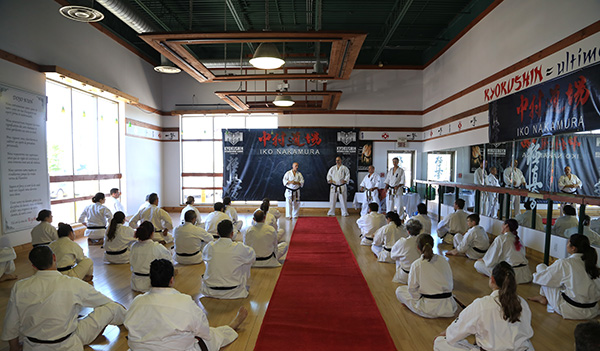
The honbu (head office) for the Canada Division, is located in Boucherville, at Shihan Pierre Cataford’s Shihan Pierre Cataford dojo. We regularly have the opportunity to participate in Kyokushin karate clinics to refine techniques and standardize the teaching of Kyokushin in Canada.
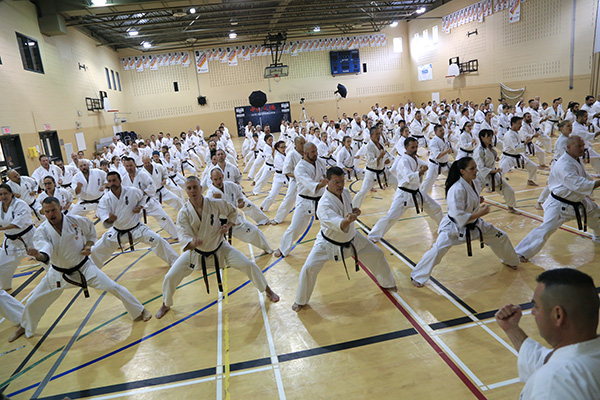
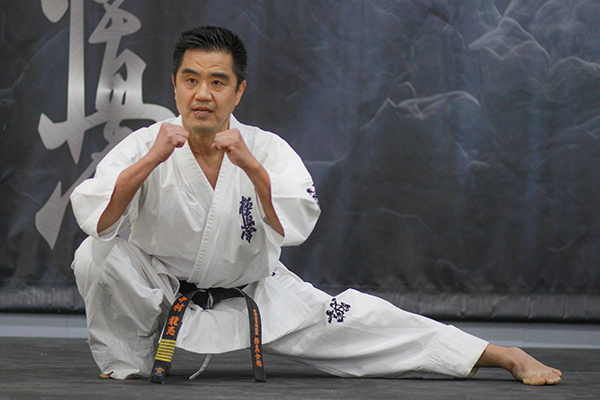
Shihan Tats Nakamura, the international secretary of the IKO Nakamura Federation, was born in Japan in 1967. He began practicing karate at the age of 15 and achieved his black belt in 1987. Subsequently, he was appointed director of the Amagasaki dojo in Japan, and this experience served as a foundation for his teaching. In 1991, he immigrated to Canada and opened a new dojo in Vancouver in June 1992. He has been training in Kyokushin Karate for 34 years within the IKO and holds a 7th dan black belt. He shares his skills and experience with passion.
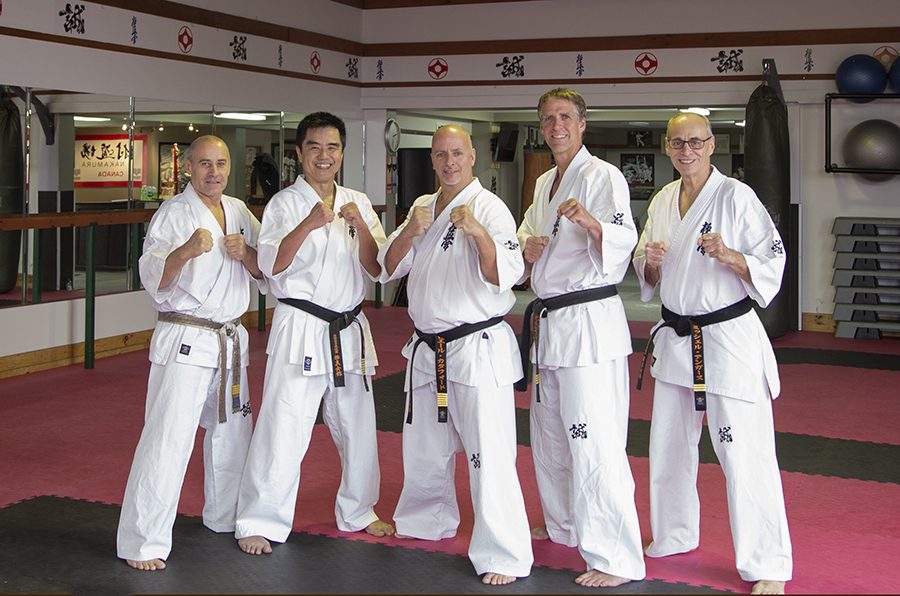
Visit of Shihan Tats Nakamura, from the Vancouver dojo to the headquarters of the Kyokushin International Kyokushin International Karate Federation in Boucherville. By maintaining regular contact with the Japanese leaders, we have the privilege of preserving the true traditions of Kyokushin karate.
.
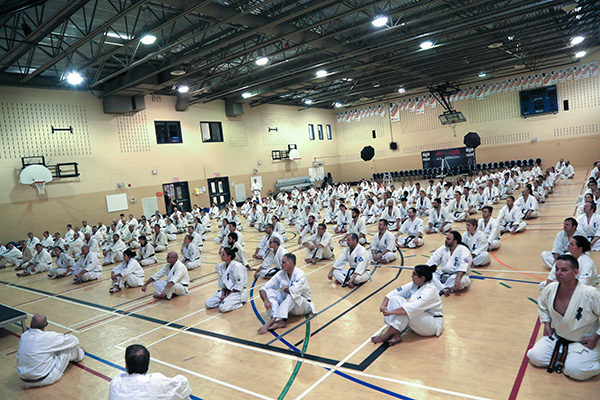
KYOKUSHIN KARATE STYLE
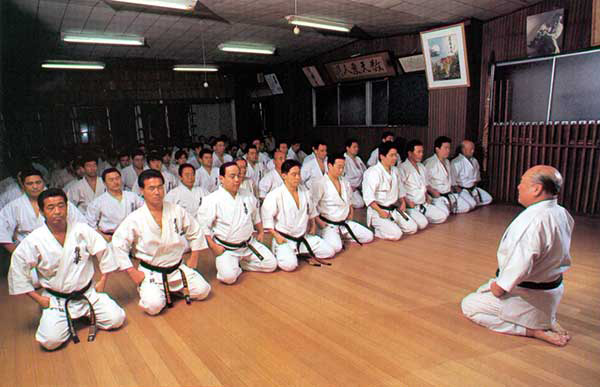
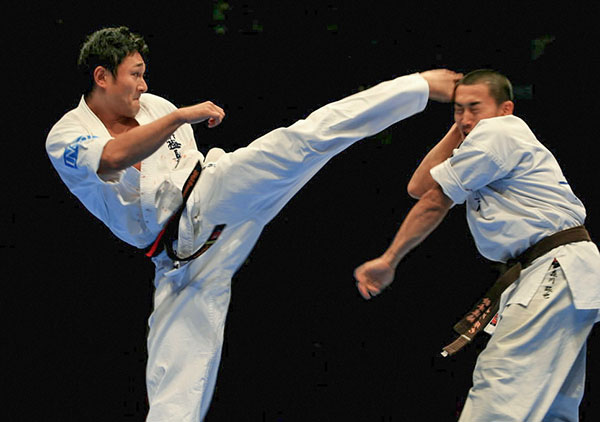
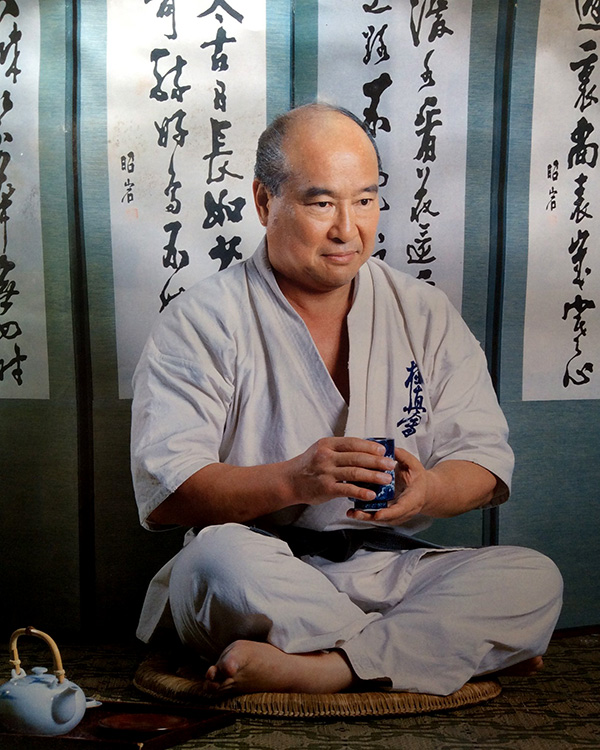
MASUTATSU OYAMA studied several styles of martial arts, including judo. He trained with Master Funakoshi, Master Yamaguchi, and Master So Nei Chu. He created a new form of karate, Kyokushin, which is a blend of Shotokan, Goju-Ryu, and several other styles.
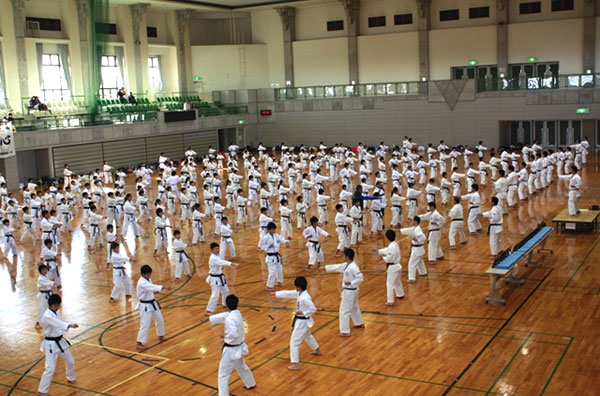
Kyokushin Nakamura Karate is present in 140 countries and has over 20 million practitioners. It is one of the most popular styles of karate.
Find out more about the history of Kyokushin karate

Sosai Oyama said: “We must constantly push the limits of our potential. We should never stop and always pursue the way of martial arts.” To accomplish this difficult task, we must always persevere and, above all, learn to be patient.
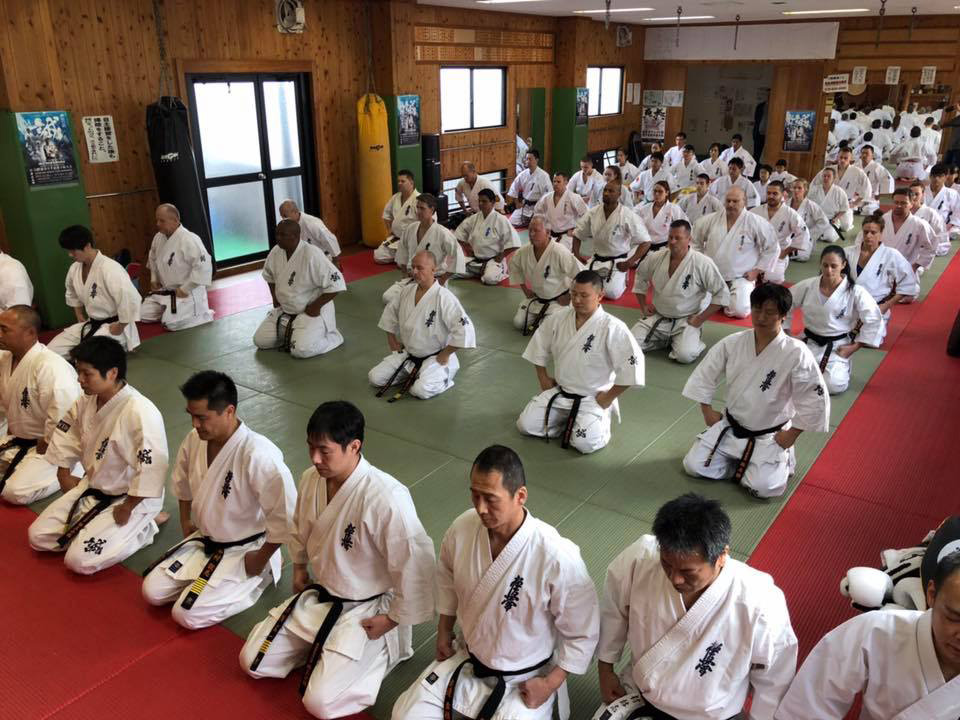
KARATE FEDERATION
KYOKUSHIN NAKAMURA


Le honbu (head office) is located in Osaka, Japan.
Nakamura Dojo, Kobe, Hyogo, Japan.



The tradition of
Kyokushin Karate

The Kanji
The Kanji is universally displayed on the dogi of Kyokushin practitioners. It must be understood that the path of Kyokushin is the pursuit of ultimate truth.

The Kanku
The Kanku is the symbol representing the Kyokushinkai style of karate. It comes from the kata of the same name, which means “to contemplate the sky.”

IKO Nakamura
Here is the Kanku used by the Kyokushin International Nakamura Karate Federation. A fist and the universal symbol have been added to the center.
The Dojo Kun
The Dojo Kun teaches us a clear path toward the ultimate goals of Kyokushin: working on character, sincerity, constant effort, respect for others, and self-mastery. Technique is secondary; what matters is the inner spirit that must be disciplined. By following these simple principles, the karateka begins to make progress on the Way of Kyokushin Karate.
We will train our heart and body in order to acquire a firm and unshakable spirit.
We will always pursue the true meaning of martial arts and keep our senses alert.
With vigor, we will seek to cultivate a spirit of personal deprivation.
We will respect our superiors and the rules of courtesy, and avoid all acts of violence.
We will follow our master and never forget the true virtues of humility.
Wisdom and strength: these are the only goals toward which we must strive.
Throughout our lives, thanks to the discipline of karate, we will strive to obey the demands of our path and our heart.
Such is the path of Kyokushin.
The prerequisites
for belt promotions
At that time, there was no color system for rank advancements, commonly referred to as belt promotions. It is said that over time, the perseverance of the karateka in training caused the white belt to become darker with wear. This is how students of a more advanced level could be distinguished. Of course, washing the belt was forbidden.
After several years of work and effort in karate, the student could attain the rank of black belt by passing a rigorous examination. Subsequently, the karateka could wash their belt, which would return to white. This symbolizes a return to the original sources, a new beginning, a new purity, with the possibility of deepening the understanding of karate. This is why it is said that karate begins at the level of the black belt.
Later on, the colored belt ranks replaced the old system of the soiled white belt. A distinct belt color was assigned to each level, corresponding to the rank achieved.

The required katas
by belt level.
White to Orange
Taikyoku First Level
Taikyoku Second Level
Sokugi First Level
…..
…..
Orange to Blue
Taikyoku First Level Ura
Taikyoku Second Level Ura
Taikyoku Third Level
Pinan First Level
Sokugi Second Level
Blue to Yellow
Pinan First Level Ura
Pinan Second Level
Sokugi Third Level
Yellow to Green
Pinan Second Level Ura
Pinan Third Level
Pinan Fourth Level
Sanchin Kata
Basic Bo Kata First Level
……
Green to Brown
Pinan Fifth Level
Pinan Sixth Level Ura
Pinan Fourth Level Ura
Teki First Level
Eight Directions of Balance
(the first eight counts)
Tonfa Kata
Brown to Shodan
Pinan Fifth Level Ura
Gekisai Dai
Gekisai Sho
Bassai Dai
Eight Directions of Balance
(the first sixteen counts)
Shodan to Nidan
Tsuki No Kata
Yantsu
Tensho
Saiha (Saifa)
Tekki sono ni
Scion Bô
Happo-no kuzushi (the 32 counts)
Nidan to Sandan
Seienchin
Seipai
Kanku
Ushiro Bo
Tekki Third Level
——
………
Sandan to Yondan
Taizen kata (Bo)
Sokei
Garyu
Sushiho
——
——
……..
Shodan: Black Belt 1st Dan
Nidan: Black Belt 2nd Dan
Sandan: Black Belt 3rd Dan
Yondan: Black Belt 4th Dan
Interpretation
Kyokushin belt colors
WHITE
Purity and potential: White symbolizes potential and purity. The new karateka is pure because they have no experience and are completely unaware of the demands of this art.
ORANGE
Stability. The element of earth, which signifies that training should focus on stability.
BLUE
Fluidity and adaptation: The element of Water, which signifies that the karateka develops the ability to adapt and react with fluidity.
YELLOW
Affirmation: The element of Fire. Focus on the Hara and feel the energy flowing from this center.
GREEN
Emotionality and sensitivity: The element is Air and is connected to the heart. In the dojo, the green belt focuses particularly on breathing techniques.
BROWN
Creativity and practice: At this level, the karateka will develop their own combinations. The karateka should be strong and very comfortable in executing all techniques.
BLACK (SHODAN)
The black belt is the most significant in a karateka’s life. Black is a strong color, as it encompasses all other colors. A black belt who trains extensively will see their belt wear down and eventually turn white again. The circle is complete.
Name and meaning
Kyokushin katas
Taikyoku (1, 2, 3), created by Gishin Funakoshi.
The Ultimate Action.
Sokugi (1, 2, 3), created by Mas Oyama in 1980.
Kata of kicks.
Ichigai kata
Means the union of spirit and will (or a single will).
Hiji kata
Kata of attacks, especially with the elbows.
Pinan/Heian (5), Created by Anko Itosu in 1905 (trainer of Gichin Funakoshi)
Forms of peace and calm (long peace).
Sanchin no kata, Brought by Kanryo Higaonna from China to Okinawa.
Three Battles.
Gekisai sho, Created by Chojun Miyagi in 1940.
Conquer and occupy with discretion.
Gekisai Dai, Created by Chojun Miyagi in 1940
Conquer and occupy with strength.
Yantsu, created by Mas Oyama,
Maintain purity.
Tsuki no kata
Kata of punches.
Seipai
The eighteen hands (6 x 3), where 3 represents good, evil, and peace.
Tensho, created by Chojun Miyagi as a complement to Sanchin.
Reversed palm techniques.
Saiha (saifa), created by Chojun Miyagi
Maximum destruction.
Seienchin
Calm through the storm.
Garyu
Reclining dragon.
Created by Mas Oyama (Garyu was Mas Oyama’s pseudonym in his early karate days)
Develop a spirit of humility like a reclining dragon that possesses strength but chooses not to unleash it.
Kanku
Looking at the sky.
Originally Kushanku, Okinawa in 1756
Kata chosen by Gichin Funakoshi during his first karate demonstration in Japan in 1922. Kanku is the supreme kata of Kyokushin.
Sushiho
Fifty-four steps.
KYOKUSHIN INTERNATIONAL KARATE NAKAMURA CANADA

The International Kyokushin Karate Nakamura Federation of Canada, currently consists of 12 dojos in the region. During the last seminar with Daihyo Masanaga Nakamura, on October 27, 2018, over 300 karateka participated.

Shihan Pierre Cataford, a sixth dan, is the branch chief of the International Kyokushin Nakamura Karate Federation. Throughout his career, he has trained with several great masters and world champions in Kyokushin karate, including André Gilbert, Bobby Low, Akiyoshi Matsui, Kengi Midori, Katsuhito Gorai, Royama Hatsuo, Francisco Filho, Emil Kostov, Gergana Kostova, Garry O’Neil, and Hitoshi Kiyama. With over 40 years of experience in Kyokushin karate, he has built a strong international reputation.

The honbu (head office) of the Nakamura Canada Federation is located in Boucherville, at Shihan Pierre Cataford dojo. We regularly take part in Kyokushin karate clinics to perfect techniques and standardize the teaching of Nakamura Kyokushin in Canada.


Shihan Tats Nakamura, the international secretary of the IKO Nakamura Federation, was born in Japan in 1967. He began practicing karate at the age of 15 and achieved his black belt in 1987. Subsequently, he was appointed director of the Amagasaki dojo in Japan, and this experience served as a foundation for his teaching. In 1991, he immigrated to Canada and opened a new dojo in Vancouver in June 1992. He has been training in Kyokushin Karate for 34 years within the IKO and holds a 7th dan black belt. He shares his skills and experience with passion.

Visit of Shihan Tats Nakamura, from the Vancouver dojo to the headquarters of the Kyokushin International Kyokushin International Karate Federation in Boucherville. By maintaining regular contact with the Japanese leaders, we have the privilege of preserving the true traditions of Kyokushin karate.

KYOKUSHIN KARATE STYLE




Kyokushin Nakamura Karate is present in 140 countries and has over 20 million practitioners. It is one of the most popular styles of karate.


Learn more about Kyokyshin Nakamura karate

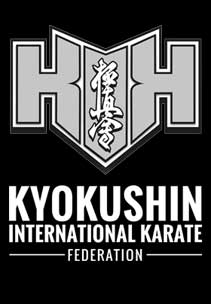
220 Saint-Louis Street, Suite 101
Saint-Jean-sur-Richelieu
info@karatesaintjean.com
Phone: 514-464-8125

All rights reserved Michel Angers – Kyokushin Karate Saint-Jean-sur-Richelieu
Member of the Canadian Federation of International Kyokushin Karate
https://karatekyokushin.ca/

220 Saint-Louis Street, Suite 101
Saint-Jean-sur-Richelieu
info@karatesaintjean.com
Phone: 514-464-8125

All rights reserved Michel Angers 2018 – 2022 Kyokushin Karate Saint-Jean-sur-Richelieu
